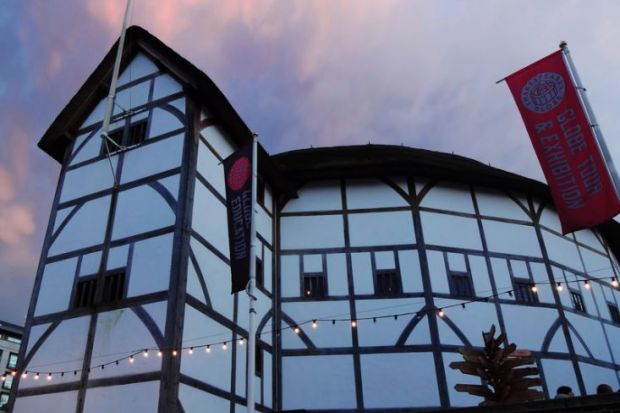Pandemic causes financial hardship to arts venues. In Geoffrey Marsh’s exploration of the parish in which Shakespeare spent at least some of his early years in London, the arts venue in question belongs to theatrical entrepreneur James Burbage and the pandemic is caused by bubonic plague.
Plague was a recurrent theme in the life of Saint Helen’s Bishopsgate. Don’t allow yourself to become interested in any of the many children who are mentioned in this book, because if their birth is announced on one page their burial will probably be on the next. Plague decimated Shakespeare’s neighbours and prevented Burbage from making an initial profit from his brilliant idea to build The Theatre, whose construction materials Marsh painstakingly itemises and costs as part of his examination of the material conditions of late Elizabethan life. It is an inevitable concomitant of working with parish registers that records of deaths are going to feature prominently, but burials loom particularly large in this book. So, too, do tombs, since Marsh offers a lively account of memorials in Saint Helen’s church (including an effigy of an errant daughter with her back turned to her parents).
Shakespeare himself remains a shadowy figure. That is what one might expect, and he could in any case hardly compete for the limelight with the girl who vomited pins or the vicar who killed two people during a football match. But his neighbours come vividly alive, whether they are railing against the theatre, working in leather (Marsh intriguingly suggests that Shakespeare himself might have worked or planned to work in the leather industry), funding voyages of exploration, founding London’s first further education establishment in the shape of Gresham College or moving into Crosby Hall, which is mentioned in Richard III. Some were musicians, quite a few were doctors, and some of the most prominent were of Italian birth or ancestry. It seems likely that Shakespeare would have found them congenial and that they do indeed represent a significant context for his works.
Marsh’s book is, as he rightly claims, a prequel to Charles Nicholl’s The Lodger (2008), which uses Shakespeare’s evidence in a 1612 case about an unpaid dowry to illuminate his residence in Silver Street. It has not quite the elan of Nicholl’s book, and if I have a gripe it is that mentions of Shakespeare are often supplemented by reminders that he is an important figure in world literature. I know that; I wouldn’t be reading a book about him if I didn’t. I did, however, learn many other things from Living with Shakespeare, and I expect to carry on doing so because the many lavish illustrations, tables, charts and even diagrams make it an absolutely invaluable reference book. (It is worth saying that it is a very big book – about the same size as a piece of A4 – and that the images are all of excellent quality.) Moreover, it is, like Nicholl’s book before it, not only an exploration of what part of Shakespeare’s life might have been like but an exemplar of how one might go about imagining the life of a writer in Elizabethan London.
Lisa Hopkins is professor of English at Sheffield Hallam University.
Living with Shakespeare: Saint Helen’s Parish, London, 1593-1598
By Geoffrey Marsh
Edinburgh University Press, 512pp, £25.00
ISBN 9781474479721
Published 30 April 2021
POSTSCRIPT:
Print headline: The Bard’s view of Bishopsgate
Register to continue
Why register?
- Registration is free and only takes a moment
- Once registered, you can read 3 articles a month
- Sign up for our newsletter
Subscribe
Or subscribe for unlimited access to:
- Unlimited access to news, views, insights & reviews
- Digital editions
- Digital access to THE’s university and college rankings analysis
Already registered or a current subscriber? Login








